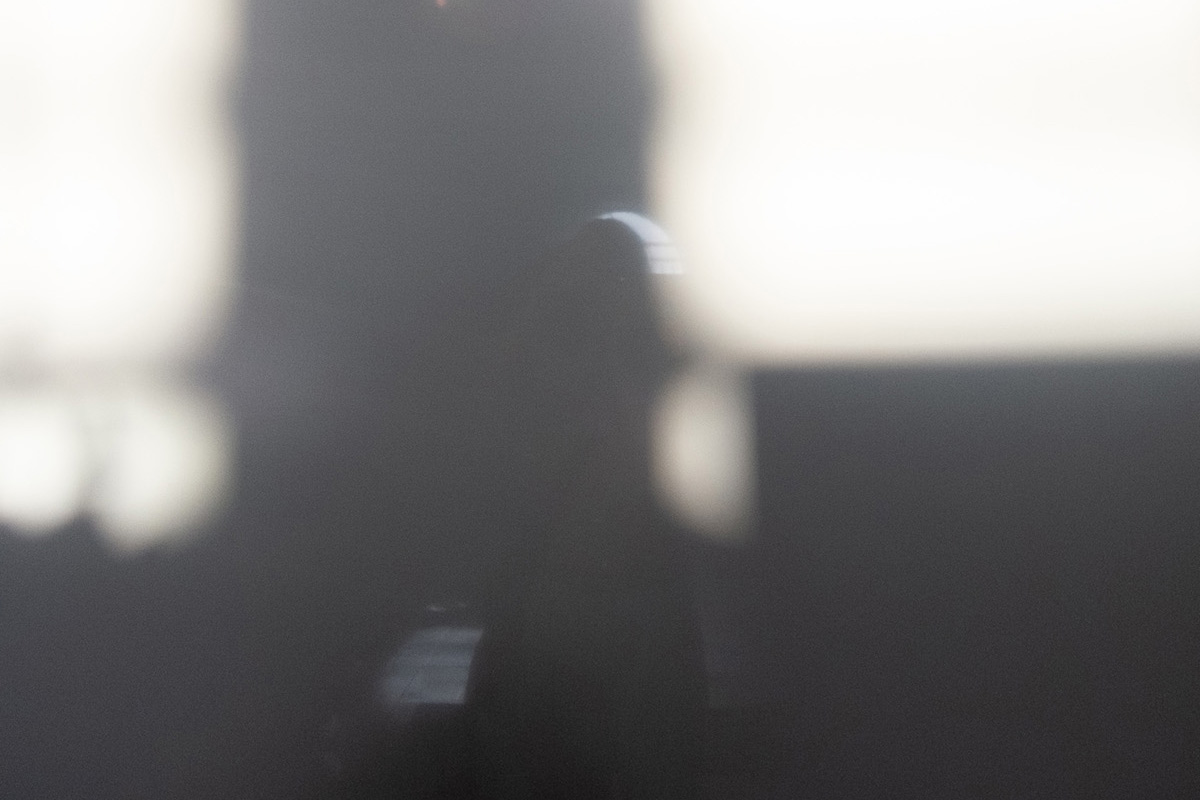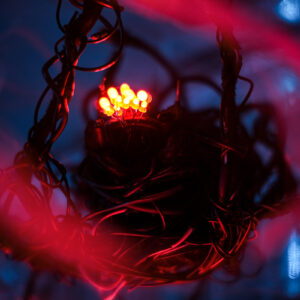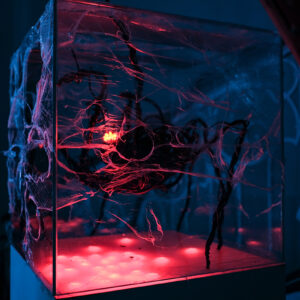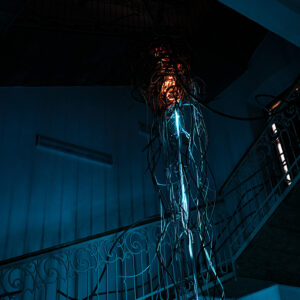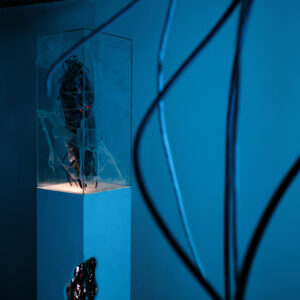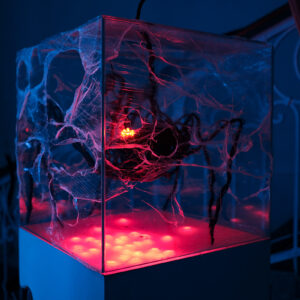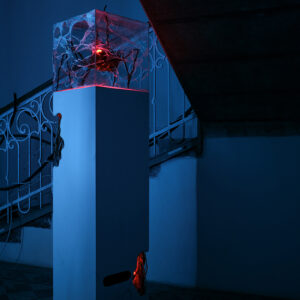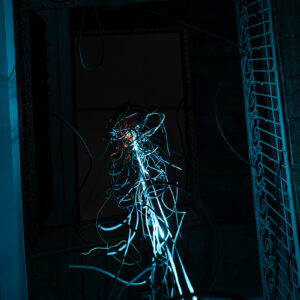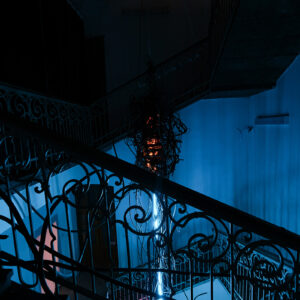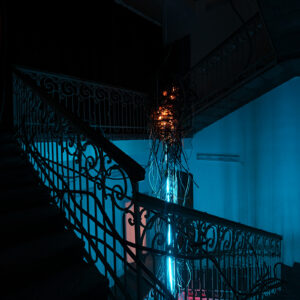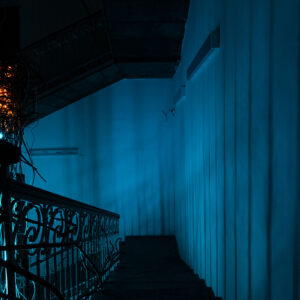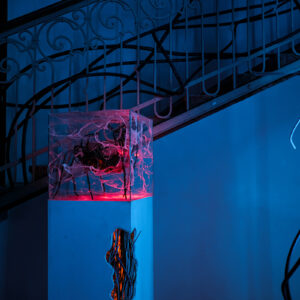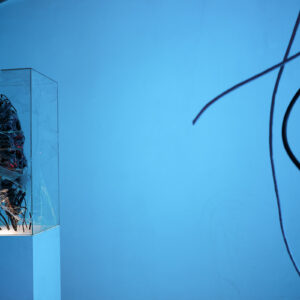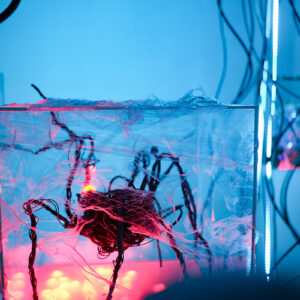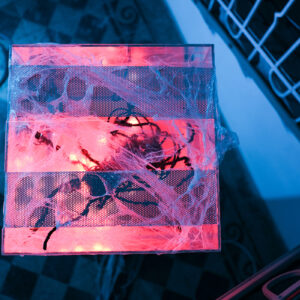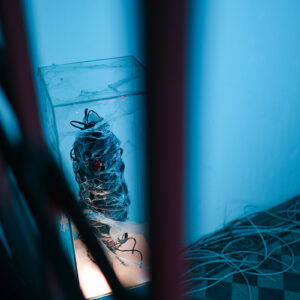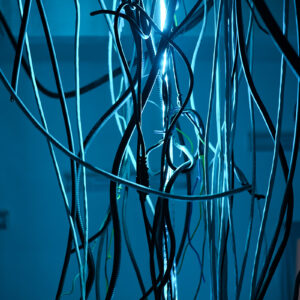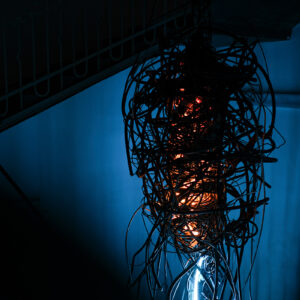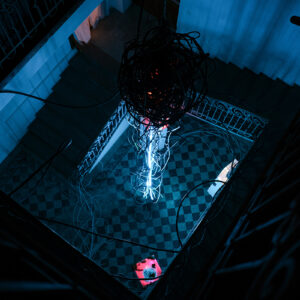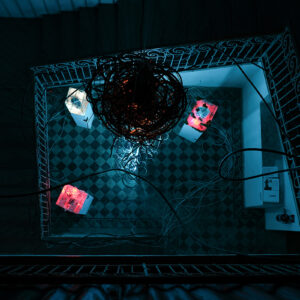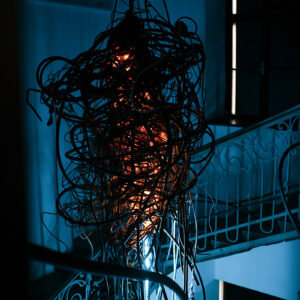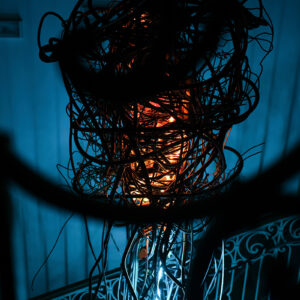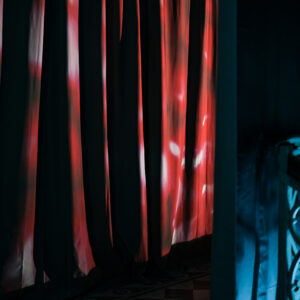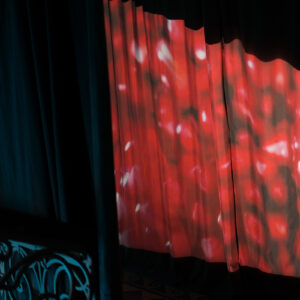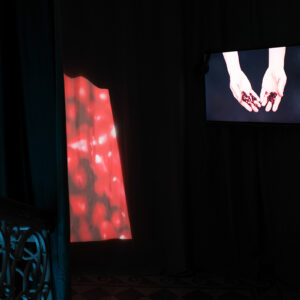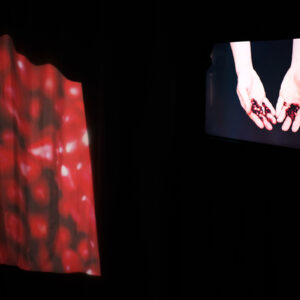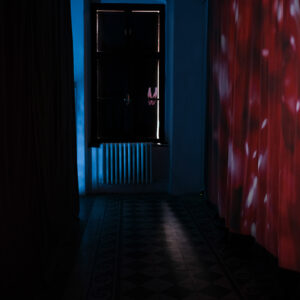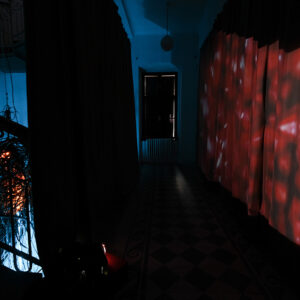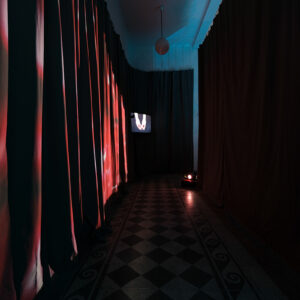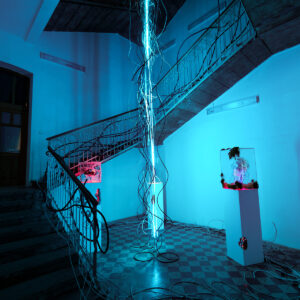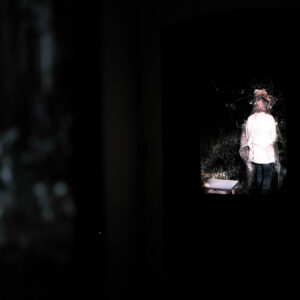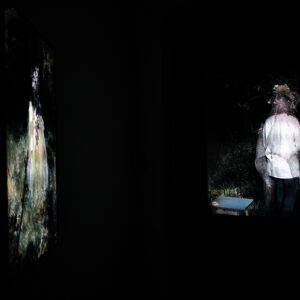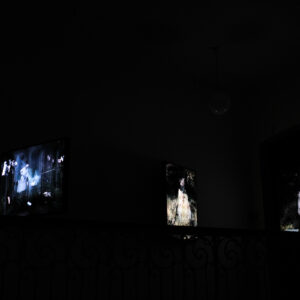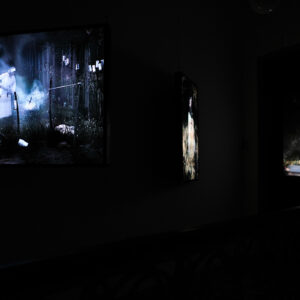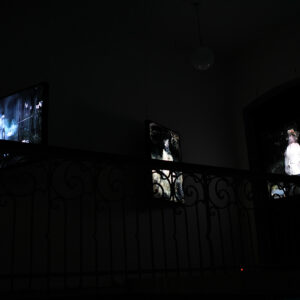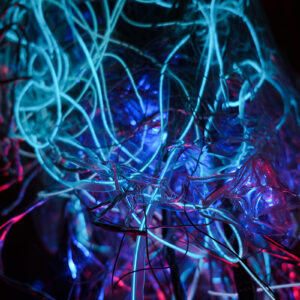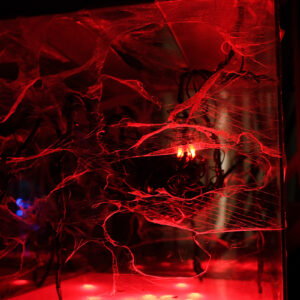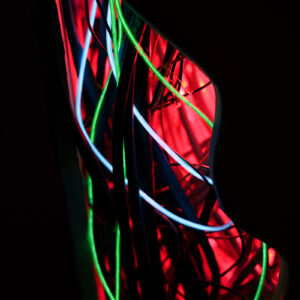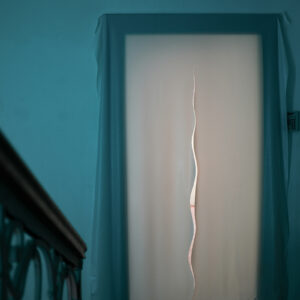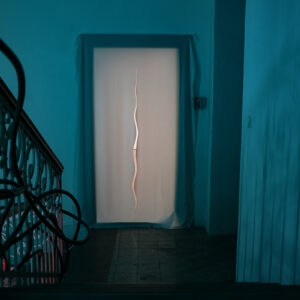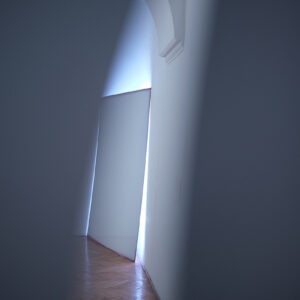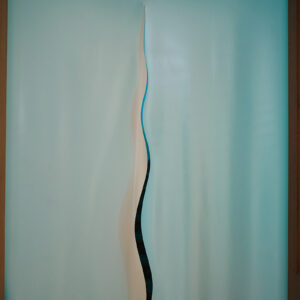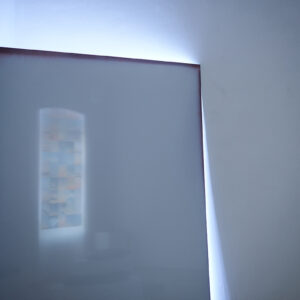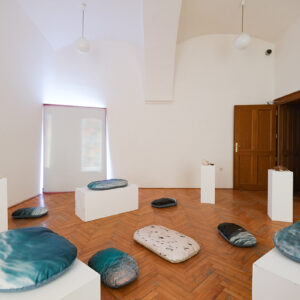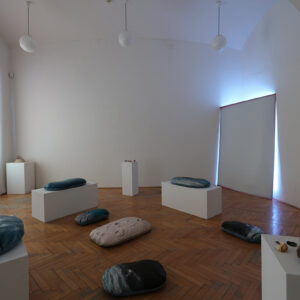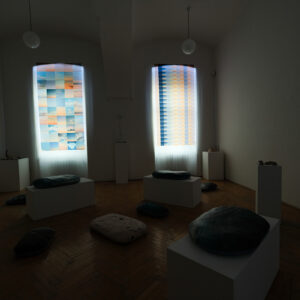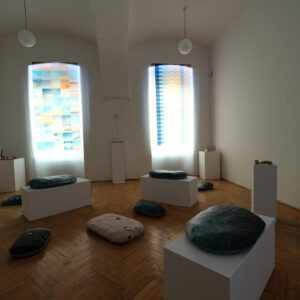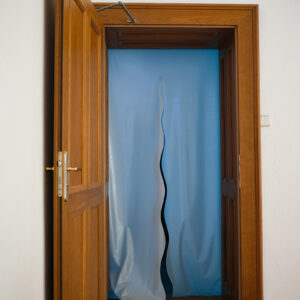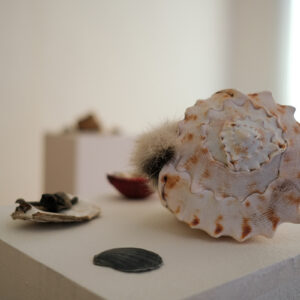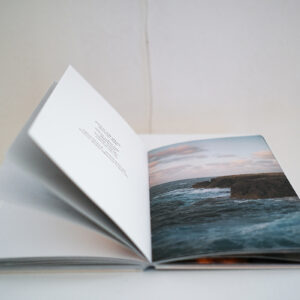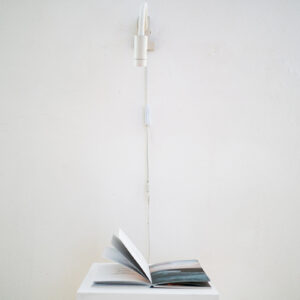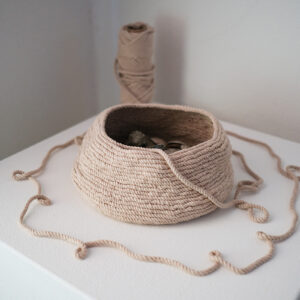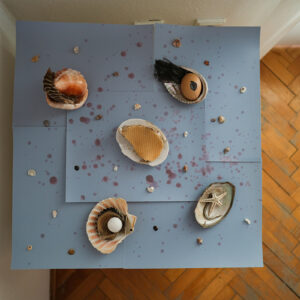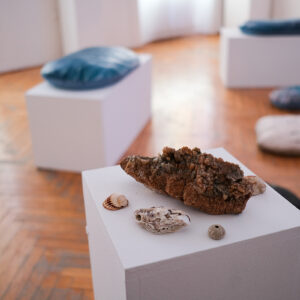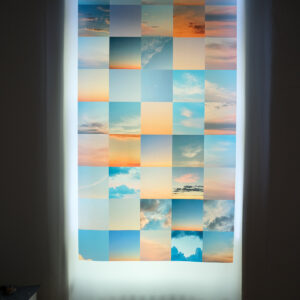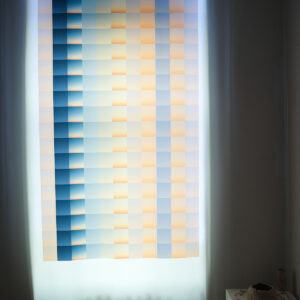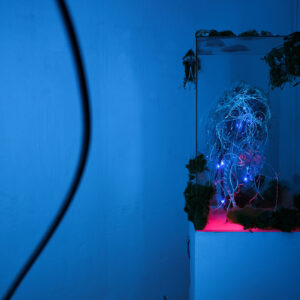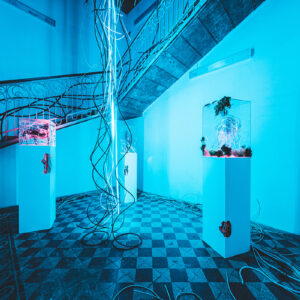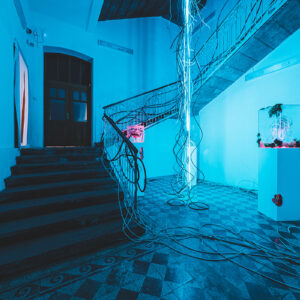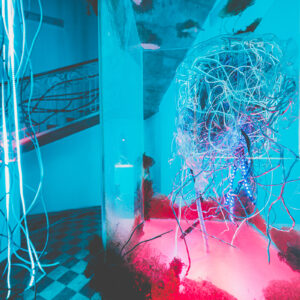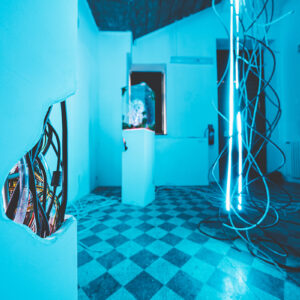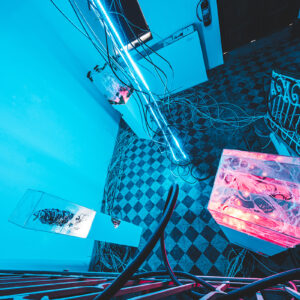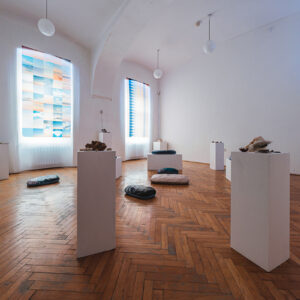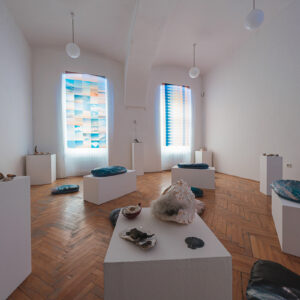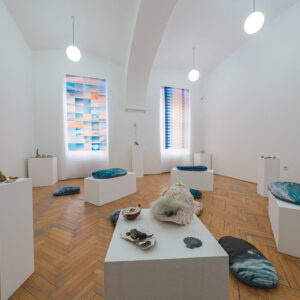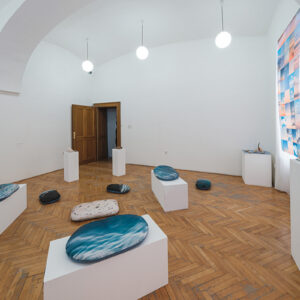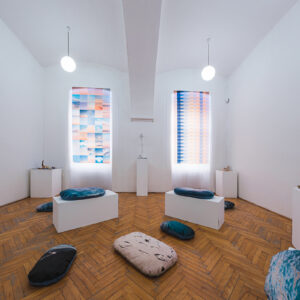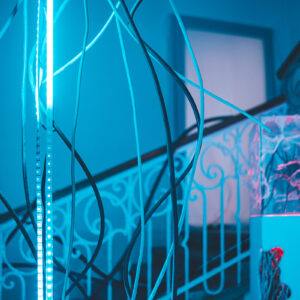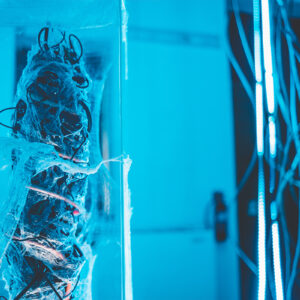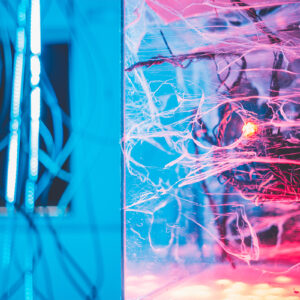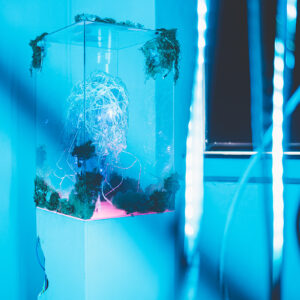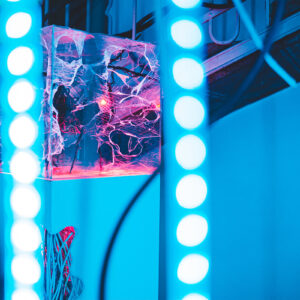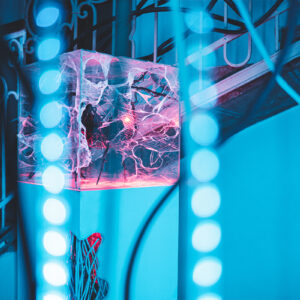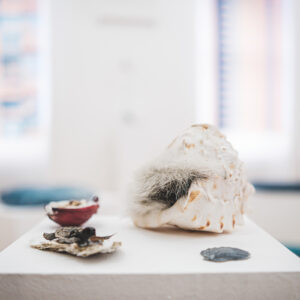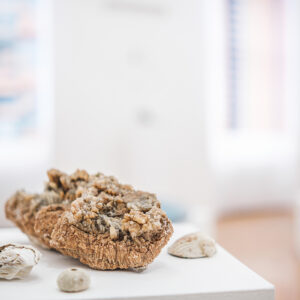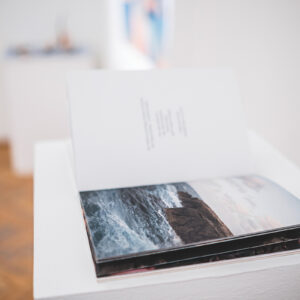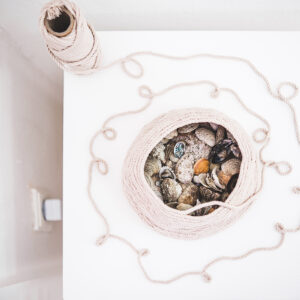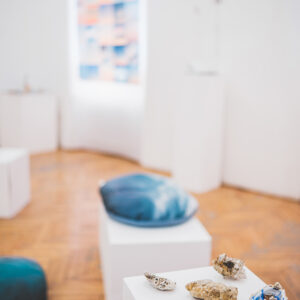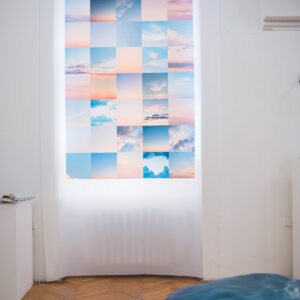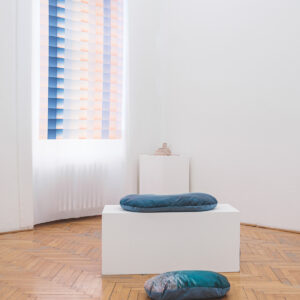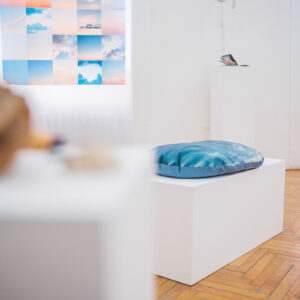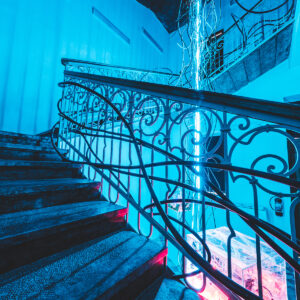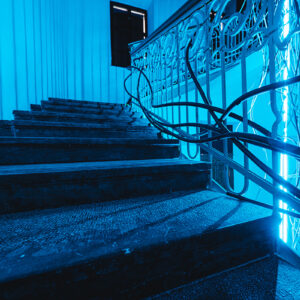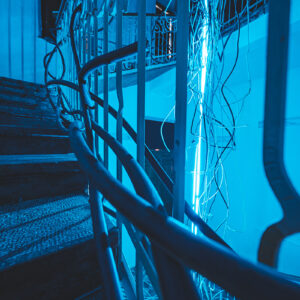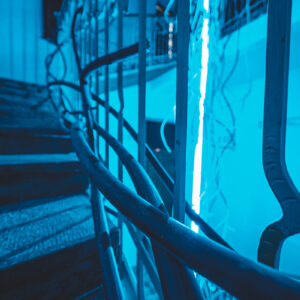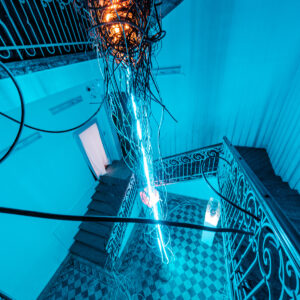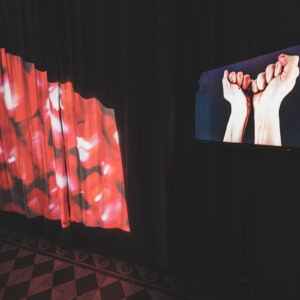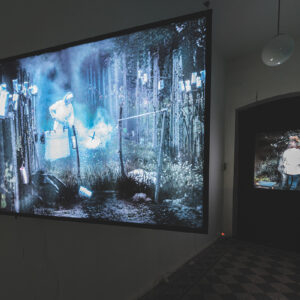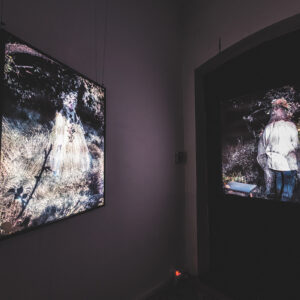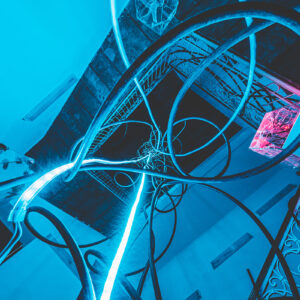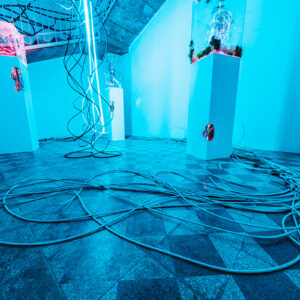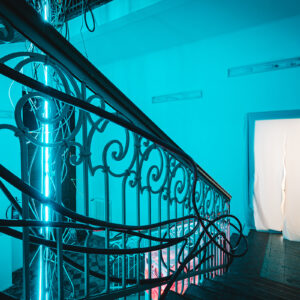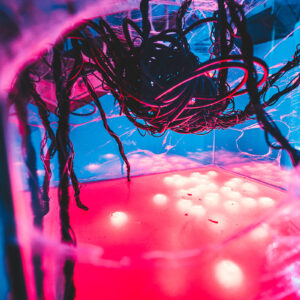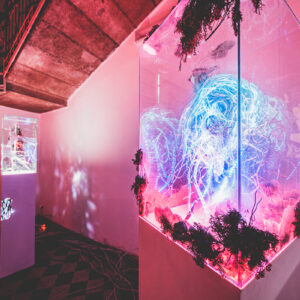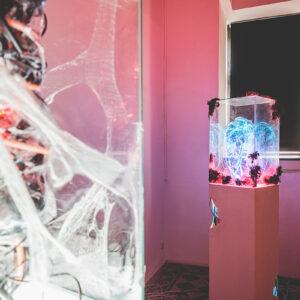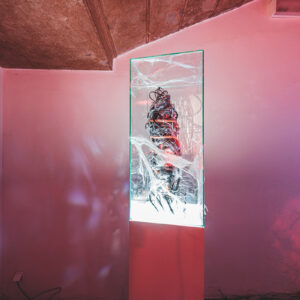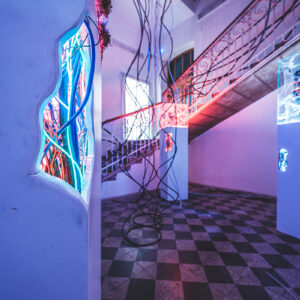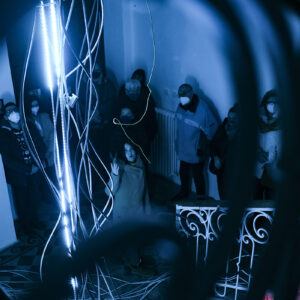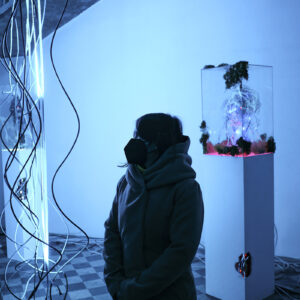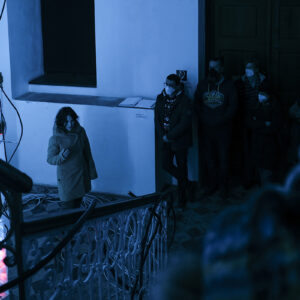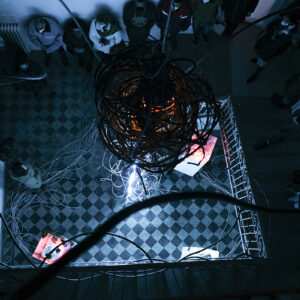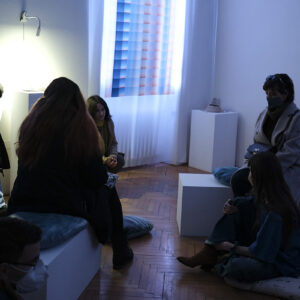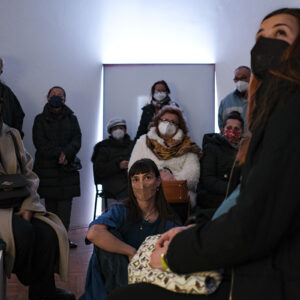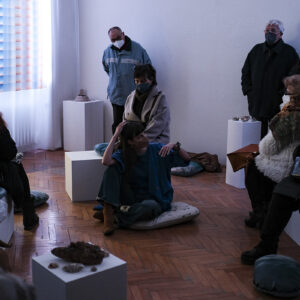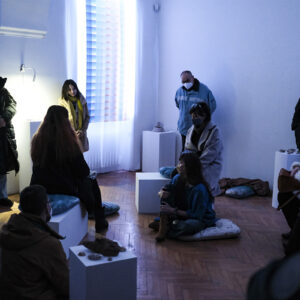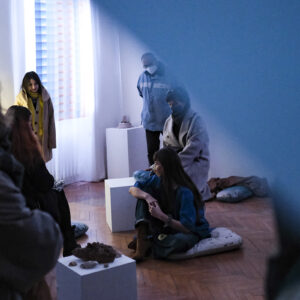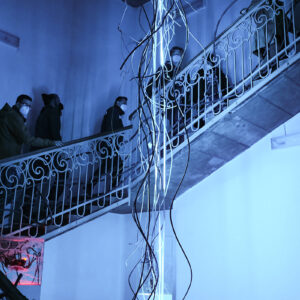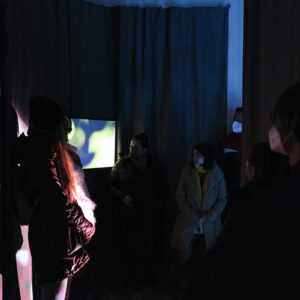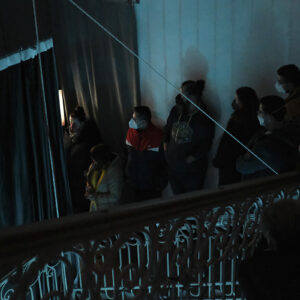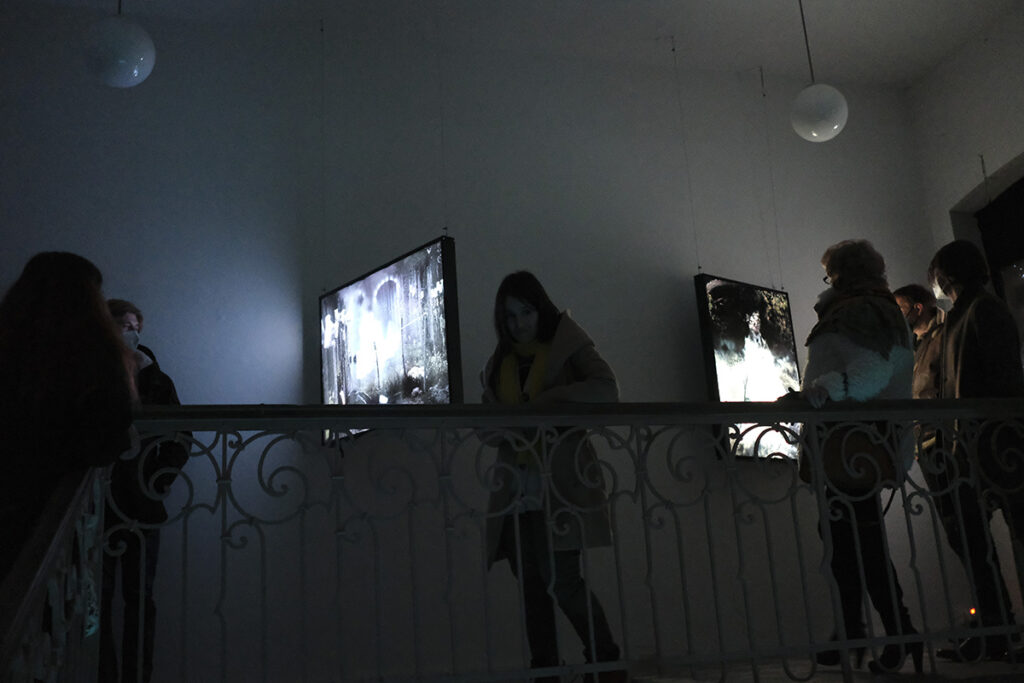Information
Exhibiting artists
Ester Sabik, Veronika Verešová, Zoltán Baráth, Radovan Dranga, Alex Zelina
Curator
Dominika Kuchynková
Duration
November 25, 2021 – January 30, 2022
Venue
Youth Gallery
Download
Storytelling is probably one of the oldest and most widespread oral traditions in every culture. Not many other things can match the complexities offered by fairytales. They keep us company from early childhood when they serve as a learning tool all the way to our old age when we hand their wisdom and morale down to our grandchildren. We often create stories and fictional images in our minds. We make up narratives and put ourselves in the roles of the main protagonists of stories that merge reality and dreams where the most unlikely becomes true, including our nightmares. Sometimes, the illusion is so strong we tend to believe it ourselves and talk others into believing in it as well. We let streams of illusions seep into our everyday reality. Is it sometimes too much? Our imagination has no limits, it creates a space where everything is possible. The omnipresent duality of light and darkness represents a basic principle which is common to every world, both the real one and the imaginary, “unreal” one.
Fairytales are a cultural heritage which from our early years through our whole life help us better understand ourselves, the others, our surroundings and life itself. It is just as true today as it was in the past. To be happy with ourselves, we need the feeling of something extraordinary happening in our lives or we need to make it happen ourselves. We protect ourselves from many negative outside forces and inner struggles that “attack” us every day. To do that, we need to use positive notions, feelings of hope and self-confidence. All of this is encompassed in many ancient, but also contemporary narratives. They use comprehensible language to teach us how to deal with certain issues and complexities of the outside world, how to get along with society, but also with ourselves, our inner conflicts, sorrows and anxieties. How to find something meaningful in all of the chaos. Not something poetic, abstract, theoretical and non-specific, but something tangible, simple, direct and “good” in its nature. Thanks to the numerous layers of both obvious and hidden meanings, the stories can satisfy a child’s mind the same way they can captivate the burdened and over-contemplative mind of a “grownup”. The plot then adds to their form and believability.
In order to overcome our inner struggles, we first need to understand what is going on with us, especially with our subconsciousness which affects us profoundly. We can use our conscious fantasies and imagery to better understand our subconsciousness which can help us deal with it and “liberate” it. Since childhood, fairytales and storytelling have been broadening our imagination and fantasies which allows us to daydream and fantasise about our life. They use conveyed meanings to deliver their morale. Their message is clear and allows us to understand man’s primary destiny which is our diligent struggle with everyday issues, life’s injustices, crises and pains. This fight concerns us all and allows us to survive, makes us stronger, more experienced and wiser. We have to engage in it and fight for a better future. By identifying ourselves with the hero, we let others know who we want in our life.
The young exhibiting artists take a visually artistic approach to express what we could call a “fairytale”, a story, fantasy, dream or illusion which always reflects our reality. The visitor of the exhibition titled A Mirror Image will be taken on a journey of archetypes, rituals, fears, desires and struggles, myths and reality, notions about the world and themselves, the universe and the future, fear, a story of man the hero, captured in a piece of art.
Ester Sabik (1994) obtained her masters degree in photography and new media at the Academy of Fine Arts and Design in Bratislava in 2020. According to her own words, she perceives the creative process as an absolute part of her everyday life, she captures and archives things around her. She often goes beyond the media of photography. She draws inspiration from Eastern philosophies as well as nature, immersion, slowing down, contemplation and other rituals. Her view of the world is rather magical than rational, factual or constructive. She perceives her intervention in the Youth Gallery as creating a space which invites us to stop, contemplate, reflect, but also unleash our fantasy and rediscover our childhood. It is a space which is alive, interactive, clean, full of incentives stimulating the visitors senses. It features natural materials, pillows, personal texts and works with light sensitivity,…
Veronika Verešová (2000) studies at the Academy of Fine Arts and Design in Bratislava at the Department of Intermedia and her creative program focuses on the media of photography, text and performance. She interacts with her immediate surrounding, analyses it, documents it and melts it into a visual language incorporating intermedia collaboration. She is interested in natural environments, biotopes, dying worlds, non-places or contexts of various spaces in relation to their surroundings, other kinds and ourselves. She participated at a project titled Invisible (2019) where she thematises a loss of security and man’s ability to function in public and social environments at a time of fast-changing conditions. She talks about our inability to resist change in a story about her grandmother and her tendency to look for a refuge in a garden she has lost…
Zoltán Baráth (1996) is a student at AFAD at the Department of Intermedia. He’s creative program tends to focus on video-art. He uses various archetypes and stereotypes to approach themes which are close to him at the moment. Then he incorporates his own visual language to process them, fusing his own personal symbolism and abstract corporeity. The artist’s work titled Assimilate talks about the fragility of both our bodies and identities. His creative process was inspired by the mythology and symbolism of the pomegranate.
Radovan Dranga (1991) started his academic career in art at the School of Design in Bratislava. And only recently he has finished his studies at AFAD at the Department of Photography and New Media. His primary focus is on theatre photography which he supplements with his own creative program. Together with Alex Zelina, they work with the aesthetics of cables which they use as basic building blocks of sculptures, still lifes and photography.
Alex Zelina (1988) studied scenography and subsequently also painting at AFAD. Besides 3D-mapping, video-mapping and video-art, he is also passionate about botanics, botanic-art objects and scenography. Together, they create Cable-bots, monsters set in a post-apocalyptic future where only old human technology survived, like electric appliances and cables. The work is based on their obsession with cables, video games, robots, in a post-apocalyptic mood, but positive atmosphere. The reusing of old materials represents their attempt at sustainability. The work shows their love for robots and technology, suggesting that nature can survive anything. Everything is designed to be bring peace and happiness into the gallery…
You will surely agree it is best to experience art in person. However, if you were unable to attend the exhibition, you can take a 3D virtual tour which has been prepared in collaboration with 3D Real — Virtual Tours.
